Shrimp farming is a booming industry in Australia. This growth is due in part to increasing demand for shrimp as a protein source in seafood products worldwide.

How to start Shrimp farming in Australia
How do shrimp farm in Australia?
Shrimp farmers in Australia produce their seafood by raising shrimp in captivity. Shrimp farming typically involves a water pool where the shrimp live and are grown until they are ready to be captured and processed. In Australia, most of the shrimp is exported to countries in Southeast Asia, but there is potential for expanding into new markets as the industry continues to grow.
The benefits of raising shrimp in captivity include higher production rates, increased food security, and lower environmental impact. High production rates result from the fact that shrimp can be raised in large numbers, which allows for economies of scale. Additionally, captive-raised shrimp does not involve land-based feed or fishing methods, both of which have environmental implications.
The negative environmental impact of shrimp farming can be mitigated through responsible practices such as using sustainable inputs and efficient waste management. Furthermore, efforts can be made to promote seafood consumption from sustainable sources. As a result, Australians can provide large quantities of shrimp at a low price, which helps to make this industry very profitable.
Are shrimps profitable in Australia?
Shrimp farming in Australia is profitable, as shrimps are a popular seafood item. There are several types of shrimp farming in Australia, including indoor and outdoor farming. Outdoor shrimp farming is the most common type in Australia, as it is easier to maintain. However, indoor shrimp farming is common in Australia, allowing farmers to produce shrimp faster.
Several factors affect the profitability of shrimp farming in Australia. Shrimp productivity (the number of shrimps produced per unit of land area) is one factor that affects profitability. Another factor that affects profitability is the price of seafood products, which reflects the cost of inputs (fertilizers, pesticides, water) and outputs (shrimps).
Types of shrimp farming systems in Australia
- Open water systems involve raising the shrimp in large tanks or ponds. This method is popular in tropical areas because it is easy to maintain and does not require any specialized equipment. However, it is less suited to colder climates, as the shrimp need access to fresh water throughout the year.
- Recirculation systems use filters to circulate freshwater and seawater around the raised beds, providing the shrimp with both water sources. Recirculating culture is more sustainable than other types of shrimp farming because it does not require the use of expensive nutrients or water resources, but it is less efficient because it takes longer for the shrimp to reach market size.
- Enclosed systems are similar to recirculation systems, but the filter system is inside an enclosure that keeps out predators and other animals.
In case you missed it: How to Start Shrimp Farming in Switzerland: Key Rules, Business Plan, Loan, Subsidy, Cost, and Profit
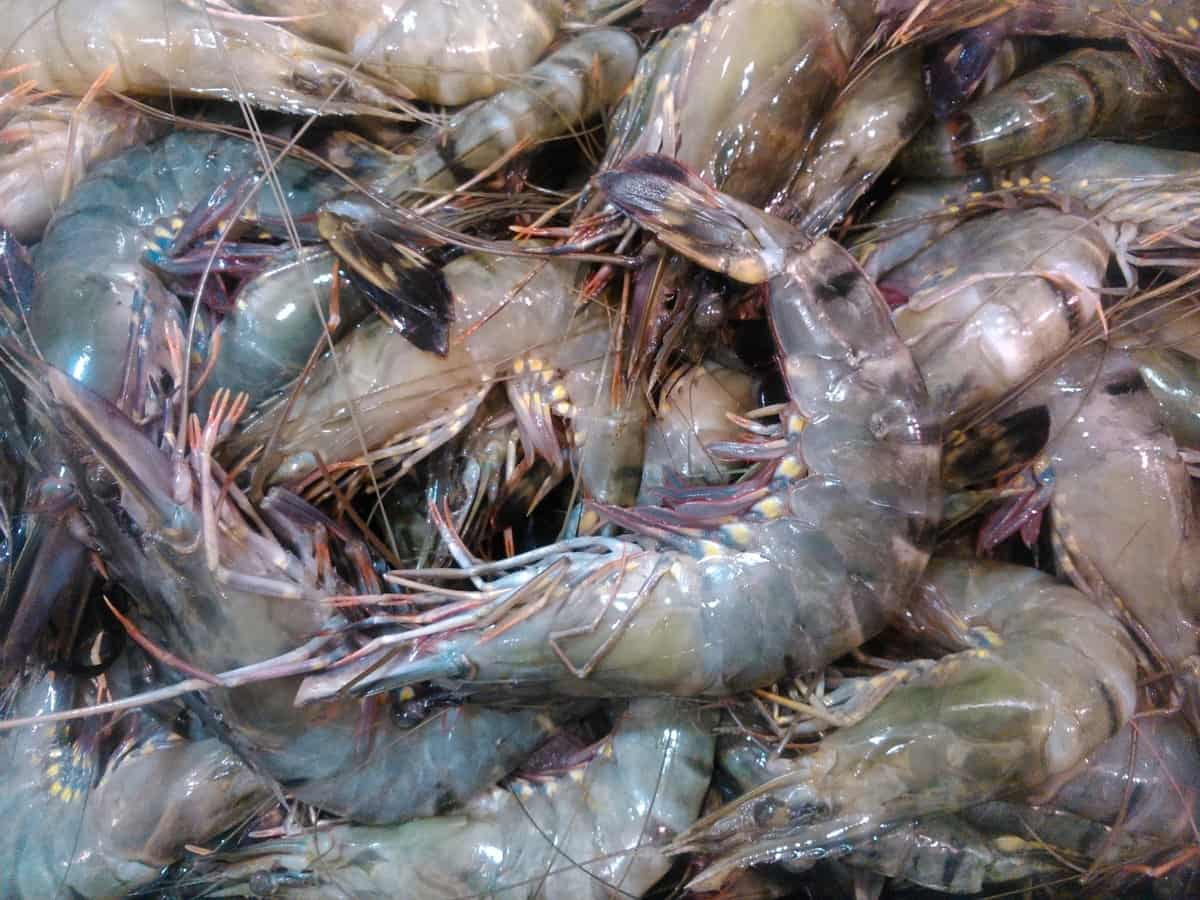
Water quality for shrimp farming in Australia
Water quality for shrimp farming in Australia is vital as the industry relies extensively on freshwater supplies. Most shrimp production occurs in Queensland, New South Wales, and Western Australia, where large agricultural land is devoted to shrimp farming.
Shrimp farming has significantly impacted water resources in Australia over the past few decades, with extensive crop production replacing traditional pastoral land uses. To meet the demand for products while minimizing impacts on water resources, farmers have evolved innovative irrigation systems that utilize recycled water or rainwater.
Feeding for shrimp farming in Australia
Typically, shrimp farming in Australia involves raising juvenile shrimp in aquaculture ponds, then transitioning them to larger ponds or sea pens where they are grown to maturity. The primary purpose of these operations is to produce fresh seafood for human consumption; however, a growing industry also produces processed shrimp products. To raise cultured shrimp successfully, it is important to provide them with a balanced diet that includes both macro and micronutrients. In general, producers will feed their shrimp a mix of dried algae and vegetables.
Still, they may include other nutrition sources, such as proteins derived from fishmeal or by-products from chicken or pig farming. Since shrimp are omnivores and do not thrive on a vegetarian diet, they must supplement their food with animal-based nutrients. This can be done through synthetic supplements or by adding animal manure to the water column. In extreme cases, production operators may even inject nitrogen into the water columns to promote plant growth and improve nutrient uptake by the shrimp.
Caring & other management tips for shrimp farming in Australia
Shrimp farming in Australia is a great option for those looking to get into the shrimp business. Here are some tips to help you get started:
- Look into state and federal government incentives. There are many government incentives available for shrimp farmers, so it is important to research to find the best option for you.
- Get a good water management plan in place. It is important to have a good water management plan in place if you want your shrimp farm to be successful. This will include figuring out how much water your farm uses, how to prevent over-watering and over-fertilizing, and how to drain properly when necessary.
- Choose the right type of shrimp species for your farm. Many different types of shrimp can be farmed in Australia, so it is important to choose the right one for your farm specifically. Some popular types of shrimp that can be farmed in Australia include red vein prawns, tiger penaeid shrimp, and black tiger shrimp.
- Make sure you have a good quality hatchery program in place. A good hatchery program will provide high-quality eggs that will hatch successfully and grow into healthy juvenile shrimp.
Site selection for shrimp culture in Australia
Australian shrimp farming is a booming industry that has seen massive growth in recent years. This is due to the increasing demand for shrimp around the world, as well as the high quality of Australian shrimp. However, there are different factors in selecting a site for shrimp culture in Australia. These include climate, soil type, and availability of water. Another important consideration when choosing a site for shrimp culture in Australia is soil type.
Shrimp farms need good soil quality to support their growth and development, and most farmers prefer soils that are naturally low in nitrogen and high in organic matter. Therefore, soil testing is often required to determine the best soil type for shrimp farming. Apart from soil type, another factor that needs to be considered when choosing a site for shrimp farming in Australia is the availability of water resources. Farmers need ample supplies of clean water to sustain their crops, so sites with access to flowing water are preferred over sites with limited access to water sources.
In case you missed it: Key Rules to Improve Feed Conversion Ratio (FCR) in Shrimp Culture
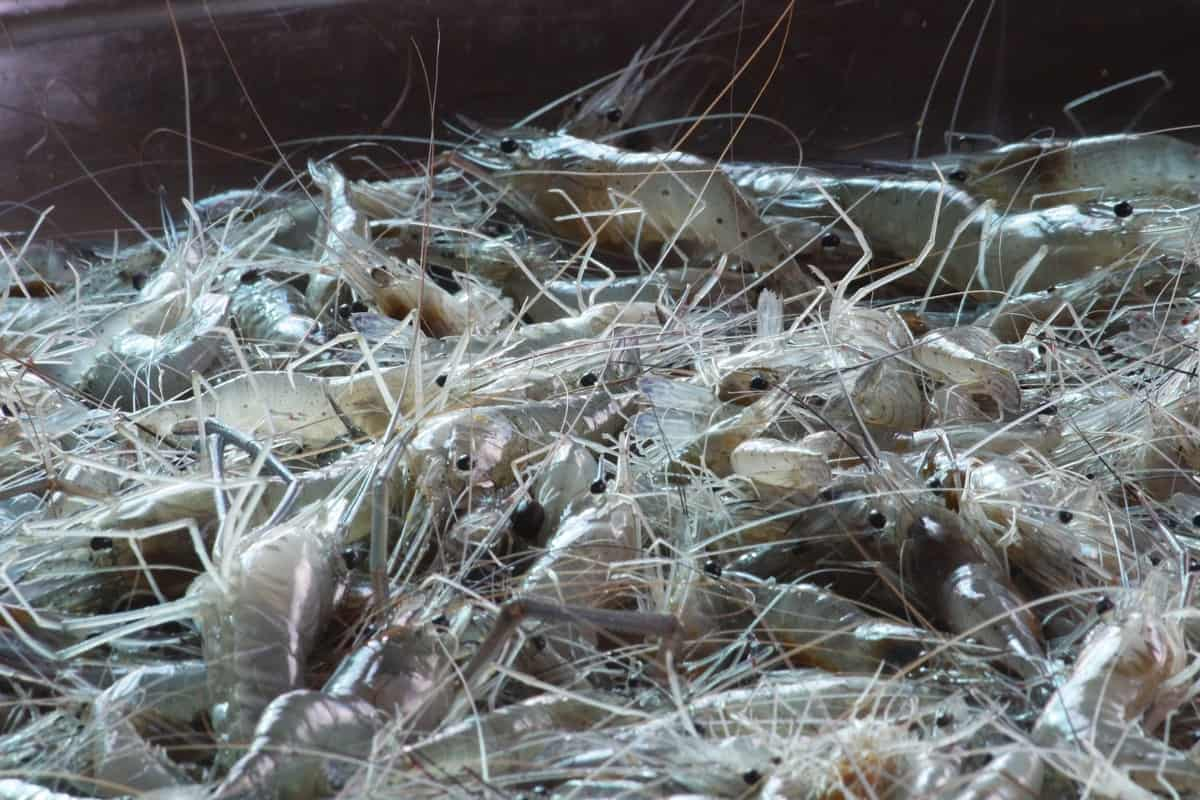
Shrimp farming challenges in Australia
Shrimp farming in Australia is a very lucrative industry, and there are many challenges that the farmers face. The biggest challenge is keeping the shrimp healthy and productive. Another challenge is the high rate of diseases in the shrimp population. Environmental issues are also to consider, such as water pollution and climate change. Australian shrimp farming is susceptible to pests and diseases, which can be costly to control. To address these issues, Australian shrimp farmers use innovative techniques, such as growing shrimps in aquatic systems that use treated wastewater as a nutrient source.
Tips to start shrimp farming in Australia
- Evaluate your market and target the right consumers.
- Plan your production carefully to meet demand.
- Manage your resources wisely to avoid overproduction and price volatility.
- Ensure environmental compliance is upheld at all stages of production.
- Stay updated with industry trends and developments to keep your business competitive.
How to start a shrimp farming business plan in Australia
- Research the best areas for shrimp farming in Australia – Several regions across the country are ideal for shrimp farming, so it is important to do your research to find the right area for your farm.
- Also consider the size of your farm – A small farm can be profitable, but it will require more work than a larger operation. Therefore, choosing an area that is large enough to accommodate your planned production goals and still be feasible to operate economically is important.
- Plan your production carefully – To be successful with shrimp farming, you must have a well-planned production strategy and constantly adjust your operations based on market conditions and data collected from past seasons. This may require some investment upfront, but it will be worth it in the long run if you can produce quality shrimp products at a profitable rate.
- Create a business plan – A comprehensive business plan is essential for any new business venture, shrimp farming included. This plan will outline your estimated costs and anticipated revenues for your shrimp farm. In addition, include information on your farming techniques (including how you will raise the shrimp), marketing strategies, financial projections, and more.
- Get licenses and permits – Before starting your shrimp farm, you will need to obtain licenses from the relevant government agencies, such as the Department of Primary Industries or Fisheries (DPI/F). You will also need to apply for appropriate permits, such as a license to operate a marine environment protection area or an Environmental Protection Authority (EPA) permit specifying permitted activities within an EPA-protected area).
Key rules for starting shrimp farming in Australia
- Get a permit – Before you even think about getting started with shrimp farming, you’ll need to get a permit from the government. This isn’t as difficult as it might sound, and several resources are available to help you get started.
- Choose the right site – The next step is to determine which site is best suited for your shrimp farming operation. Make sure that the site is well-drained and has enough water supplies nearby. You also want to ensure that the site has good sunlight exposure – this is important for growing shrimp crops and producing eggs and baby shrimp.
- Get your equipment ready – Once you’ve chosen your site and determined which equipment is needed, it’s time to start stocking up on supplies. You’ll need tanks, feeders, filters, and more. Be sure to have everything ready before you start farming so you can get started as soon as possible.
In case you missed it: Biofloc Shrimp Farming (Prawn) – a Full Guide
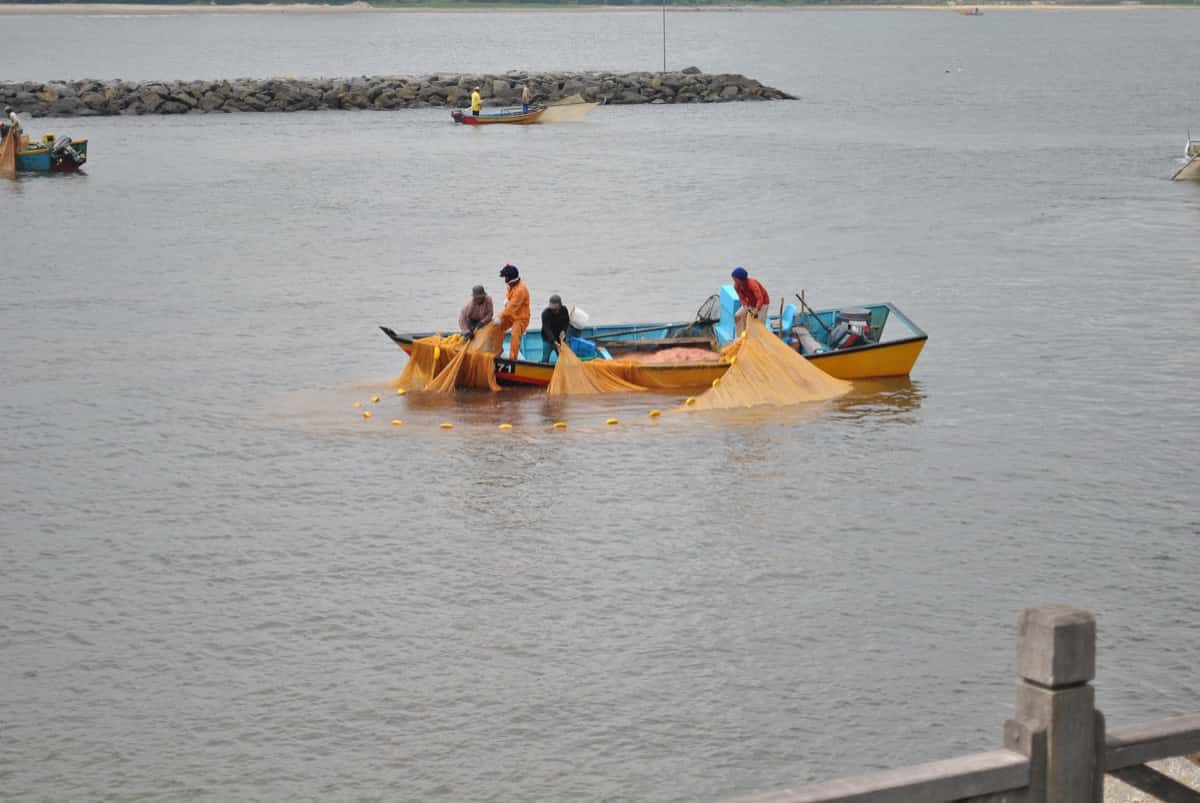
Freshwater shrimp farming in Australia
Australia’s freshwater shrimp farming industry is growing quickly, and there are several reasons for this. The country has a large potential area for shrimp production, the climate is favorable for the shrimp farming industry, and the government provides helpful subsidies to encourage farmers to get started. Freshwater shrimp farming in Australia typically involves raising larval shrimp in tanks on land before they are transferred to ocean pens or ponds, where they grow into adult shrimp.
The main methods used to raise the larvae are recirculating systems, where the water is constantly circulated; open systems, where the water is allowed to circulate but not come into contact with the ground; and earthen ponds, which are covered with soil. The Freshwater Shrimp is found in Central Queensland, New South Wales, Victoria, Tasmania, and South Australia.
Benefits of shrimp farming in Australia
Shrimp farming in Australia has several benefits. The industry is environmentally friendly, with low emissions and minimal water use. It is also highly productive, with shrimp production yielding high yields per hectare. In addition, the industry provides jobs for people in rural areas and contributes significantly to the country’s economy.
Shrimp farming states in Australia
The Australian prawn farming industry is largely based in the tropical zones of Queensland. Prawns are farmed in large-scale pond operations, which operate round the clock and every day of the year. Farms are located in four Australian states—New South Wales, Queensland, Northern Territory, and Western Australia. Shrimp farming in Australia is concentrated in a few key states – Queensland, New South Wales, Victoria, and Western Australia – but smaller operations are scattered around the country.
Shrimp species available in Australia
| Giant tiger prawn | Stygiocaris | |
| Whiteleg shrimp | Metapenaeus bennettae | |
| Eastern king prawn | Caridina serratirostris | |
| Indian prawn | Bee shrimp | |
| Paratya australiensis | Trypaea australiensis | |
| Fenneropenaeus merguiensis | Ibacus peronii | |
| Penaeus esculentus | Caridina gracilirostris | |
| Odontodactylus scyllarus | Branchinella australiensis | |
| Caridina zebra | Parartemia informis | |
| Triops australiensis | Parartemia minuta | |
| Parartemia serventyi | Cherry shrimp |
Shrimp farming loans and subsidies in Australia
Several loans and subsidies are available to shrimp farmers in Australia. The most common loans are for start-up costs, such as fencing, pumps, and other equipment. There are also subsidies available for inputs, such as feed and water. The Australian government provides several loans and subsidies to shrimp farming. The most common loan is for start-up costs, such as fencing, pumps, and other equipment. There are also subsidies available for inputs, such as feed and water. The Australian government provides the following loans:
- Start-up Loan: This loan is available to help with the costs associated with starting up your shrimp farms, such as fencing, pumps, and other equipment.
- Fertilizer Subsidy: This subsidy is available to help pay for the quality fertilizer needed for shrimp farming.
- Water Subsidy: This subsidy is available to help pay for the water needed for shrimp farming.
- Feed Subsidy: This subsidy is available to help pay for the high-quality feed needed for shrimp farming.
In case you missed it: Making 60 Lakh Per Year from Prawn/Shrimp Farming – A Success Story of an Aqua Farmer
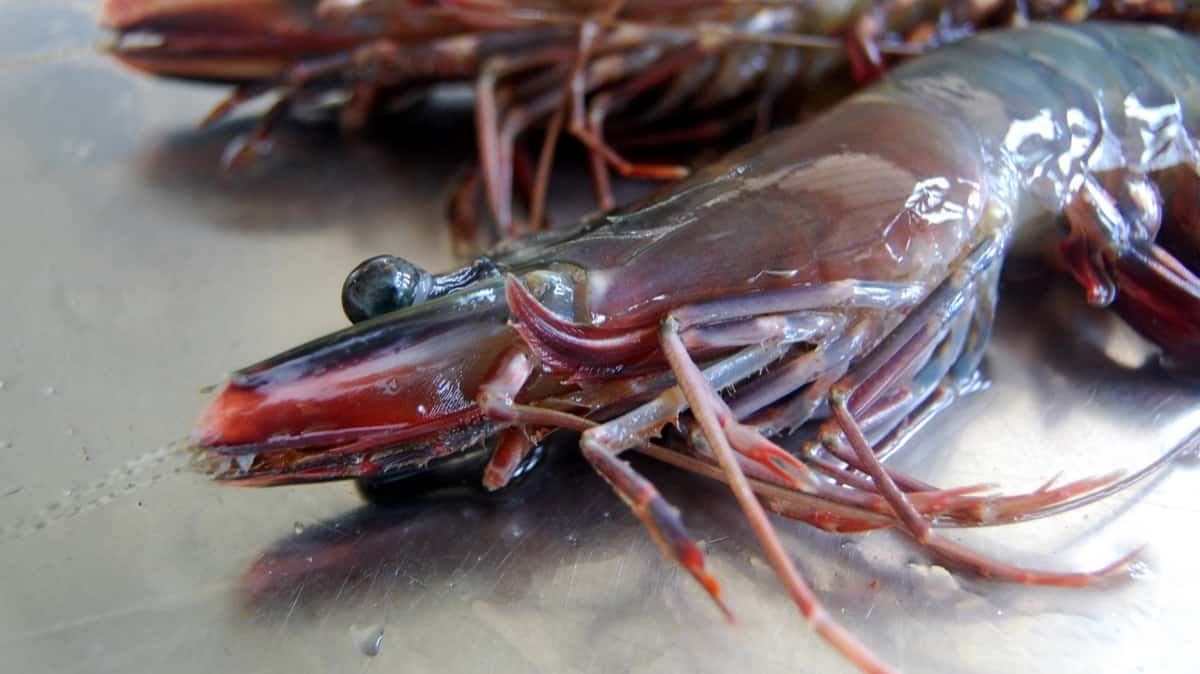
Shrimp farm set-up cost in Australia
Shrimp farming in Australia can be a rewarding and profitable venture, but it does come with some associated costs. Here is a breakdown of the typical costs associated with setting up a shrimp farm in Australia. All told, setting up a shrimp farm in Australia can cost between A$1 million and A$5 million, depending on the type of equipment and facilities required. These costs include land acquisition, fence construction, and environmental permits.
Shrimp farming problems in Australia
As shrimp farming has become more popular in recent years, there have been several problems associated with the industry. These problems include water pollution, pests and diseases, and land degradation. Water pollution is a common issue associated with shrimp farming. This problem occurs when rainwater falls on the farm’s runoff into rivers and streams containing pollutants such as nitrates and phosphates. These pollutants can harm both aquatic animals and plants, as well as cause health concerns for people who live nearby.
Pests and diseases are also major problems for shrimp farmers. These pests include marauders (which damage crops), parasites (which attack shrimp), and bacteria (which can cause illness in humans). Diseases include white spot syndrome (a type of bacterial infection), red tide (a type of algal bloom), and viral haemorrhagic septicaemia (VIH).
Land degradation is another issue that affects shrimp farmers. This problem occurs when the soil loses its ability to support plant life or water pools on the land because it cannot soak up rainfall evenly. This causes the land to become unusable for farming, which puts additional pressure on resources that are already scarce in some areas.
Harvesting and processing of shrimp in Australia
Shrimp farmers must follow strict guidelines regarding the harvesting and processing of their products. To ensure that the shrimp are safe to eat, all shrimp caught for consumption must be alive and free from disease. Once caught, all shrimps are immediately frozen before being brought to shore for further processing.
In case you missed it: Shrimp Farming in USA: How to Start, A Step-by-Step Guide for Beginners
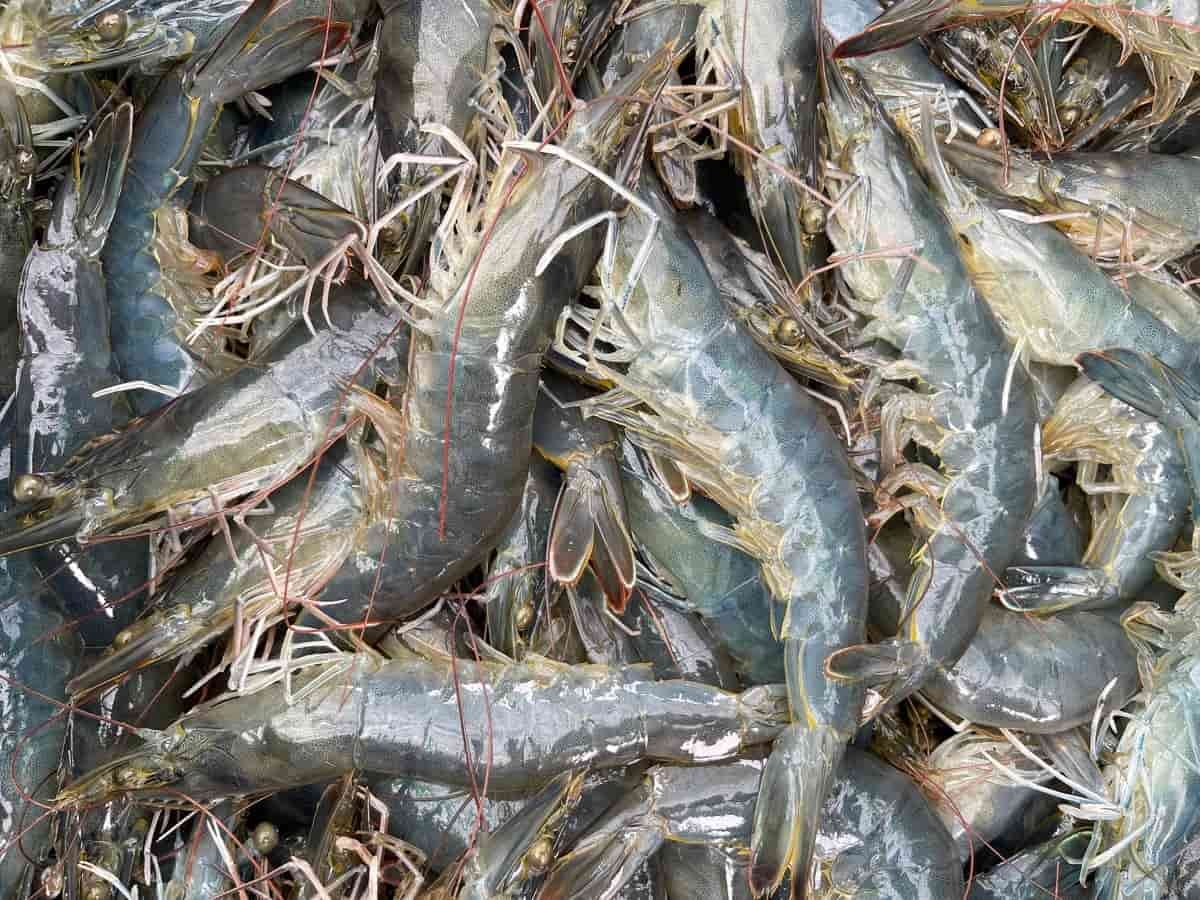
The freezing process begins by first cold heading the shrimps. This process removes their heads, tails, and antennae, leaving them ready for cooking or processing into other products such as food supplements or pet food. After being cold-headed, the shrimps are washed before being chilled in ice water for an extended period. This process helps prevent bacteria growth on the shrimps during storage or transport.
Conclusion
Australia is one of the world’s leading shrimp farming countries, with a total area of nearly 2 million hectares. The country has several shrimps farming zones, including the northwest and east coasts, where the temperate climate and ample freshwater supplies provide optimum conditions for shrimp production.
- Types of Pesticides Used in Agriculture: A Beginner’s Guide
- Economical Aquaculture: A Guide to Low-Budget Fish Farming
- 15 Common Planting Errors That Can Doom Your Fruit Trees
- How to Make Houseplants Bushy: Effective Tips and Ideas
- Innovative Strategies for Boosting Coconut Pollination and Yield
- Pollination Strategies for Maximum Pumpkin Yield
- The Complete Guide to Chicken Fattening: Strategies for Maximum Growth
- Natural Solutions for Tulip Problems: 100% Effective Remedies for Leaf and Bulb-Related Issues
- Revolutionizing Citrus Preservation: Towards a Healthier, Greener Future
- Natural Solutions for Peony Leaf and Flower Problems: 100% Effective Remedies
- Maximizing Profits with Avocado Contract Farming in India: A Comprehensive Guide
- Natural Solutions for Hydrangea Problems: 100% Effective Remedies for Leaf and Flowers
- The Ultimate Guide to Choosing the Perfect Foliage Friend: Bringing Life Indoors
- From Sunlight to Sustainability: 15 Ways to Use Solar Technology in Agriculture
- The Ultimate Guide to Dong Tao Chicken: Exploring from History to Raising
- The Eco-Friendly Makeover: How to Convert Your Unused Swimming Pool into a Fish Pond
- Mastering the Art of Delaware Chicken Farming: Essentials for Healthy Backyard Flocks
- 20 Best Homemade Fertilizers for Money Plant: DIY Recipes and Application Methods
- How to Craft a Comprehensive Free-Range Chicken Farming Business Plan
- Brighten Your Flock: Raising Easter Egger Chickens for Beauty and Bounty
- How to Optimize Your Poultry Egg Farm Business Plan with These Strategies
- Subsidy for Spirulina Cultivation: How Indian Government Schemes Encouraging Spirulina Farmers
- Ultimate Guide to Raising Dominique Chickens: Breeding, Feeding, Egg-Production, and Care
- Mastering the Art of Raising Jersey Giant Chickens: Care, Feeding, and More
- Ultimate Guide to Raising Legbar Chickens: Breeding, Farming Practices, Diet, Egg-Production
- How to Raise Welsummer Chickens: A Comprehensive Guide for Beginners
- How to Protect Indoor Plants in Winter: A Comprehensive Guide
- Ultimate Guide to Grow Bag Gardening: Tips, Tricks, and Planting Ideas for Urban Gardeners
- Guide to Lotus Cultivation: How to Propagate, Plant, Grow, Care, Cost, and Profit
- Agriculture Drone Subsidy Scheme: Government Kisan Subsidy, License, and How to Apply Online
- Ultimate Guide to Raising Araucana Chickens: Breed Profile, Farming Economics, Diet, and Care
- Bringing Hydroponics to Classroom: Importance, Benefits of Learning for School Students
- Ultimate Guide to Raising Polish Chickens: Breed Profile, Farming Economics, Diet, and Care
- Ultimate Guide to Raising Australorp Chickens: Profile, Farming Economics, Egg Production, Diet, and Care
- Silkie Chicken Farming: Raising Practices, Varieties, Egg Production, Diet, and Care
- Sussex Chicken Farming: Raising Practices, Varieties, Egg Production, Diet and Care